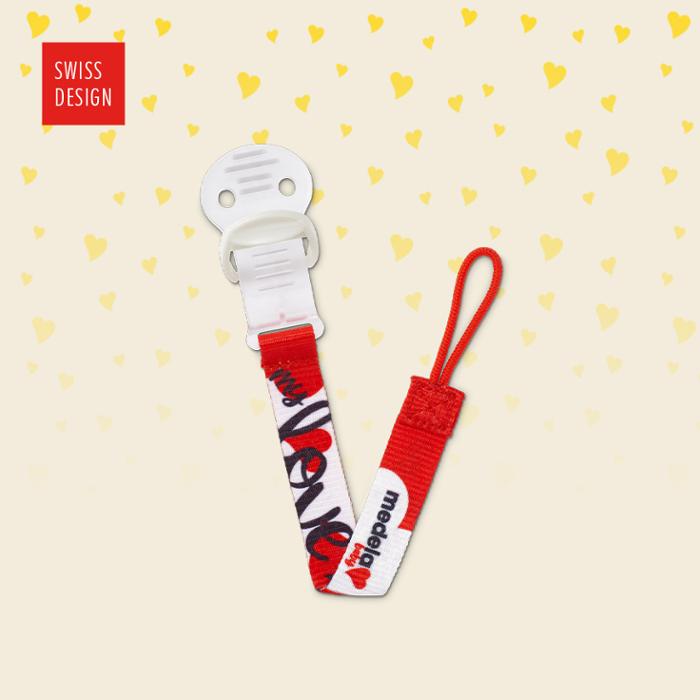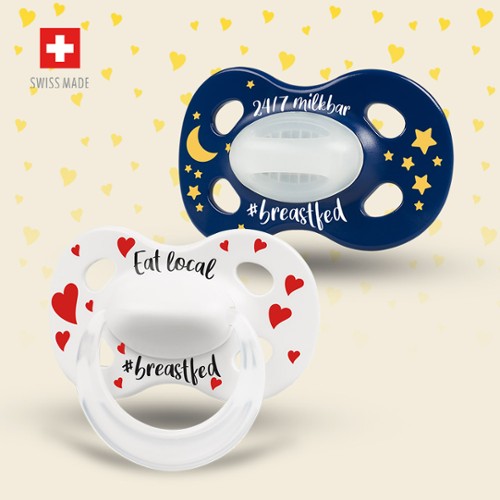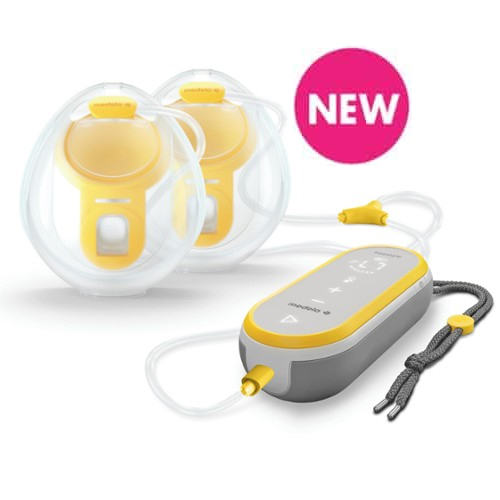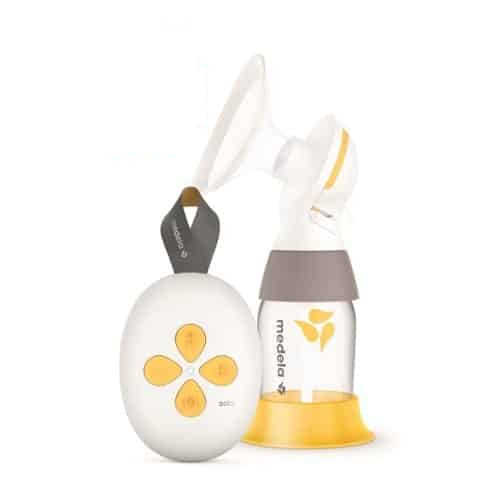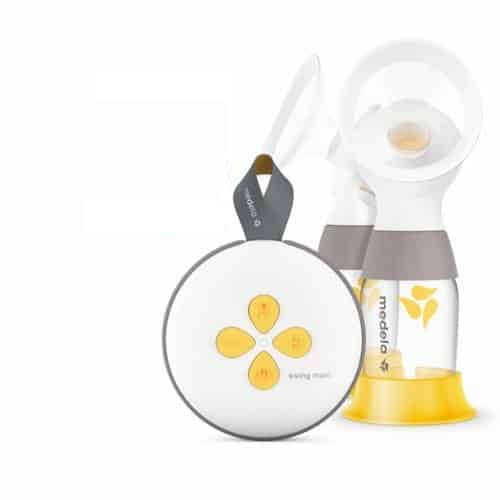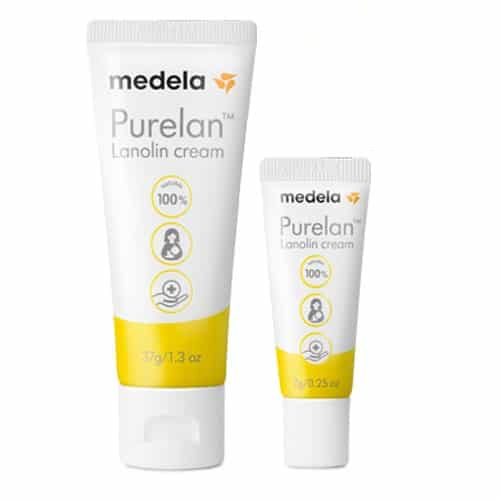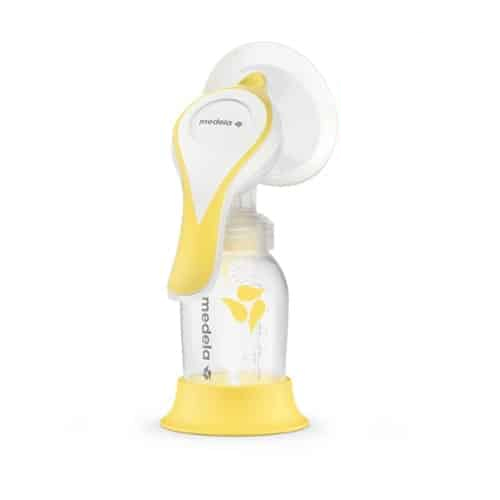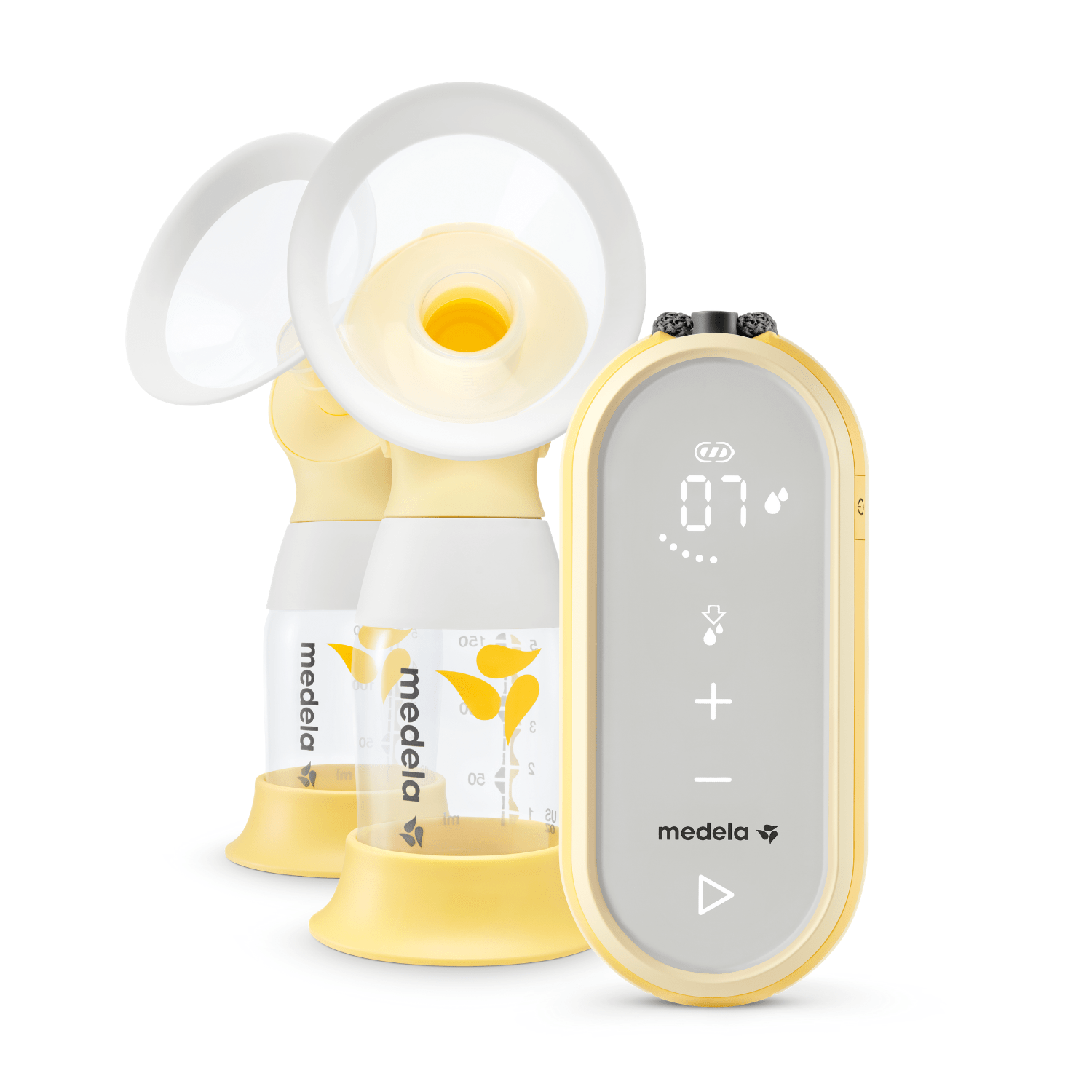No, Medela Baby only uses food-safe inks that are completely harmless for babies, even if they happen to scrape them off with their teeth.
There is scientific evidence that shows suckling on a soother helps to reduce babies’ feelings of discomfort during a painful procedure.2 When your baby needs an immunisation or a blood sample taken, try to offer the soother during the procedure.
When your baby starts teething, suckling can help relieve the stress of the pain your little one feels but doesn’t understand. However, if your baby starts to bite holes into the soother, offer a teether to chew on instead. Teethers can be helpful to relieve some of the discomforts of gum pain.
Babies can experience pain when they have an ear infection. There has been some evidence that the use of a soother could increase the risk of ear infections – acute otitis media (AOM). Suckling on a soother may create a pressure difference which prevents fluid from draining through the tube that connects the middle ear to the back of the nose and throat. This could lead to a bacterial infection. If your baby has frequent ear infections, it’s therefore recommended to reduce or eliminate the use of a soother beyond six months of age to help avoid a possible recurrence of AOM.3
Recommendations about when to stop using the soother vary greatly. Many children stop using the soother on their own or when they start eating solid foods. Other children have very strong desires to suckle for a longer period of time. The American Academy of Pediatric Dentistry recommends that weaning from a soother should start at the latest by 36 months.4
Download our ebook “Parent guide for soothers” to learn more about this journey and tips to help you go through weaning together.
- There are different ways to sterilise or clean your soother.
1) To sterilise the soother you can:
- Boil the soother for 5 minutes in water. Allow it to cool thoroughly before giving it to your baby. If needed, squeeze out any water that may be left in the teat.
- Steam sterilise the soother in the microwave.
- If you have a microwave steriliser, follow the instructions included by the manufacturer.
- If a Medela Baby Steribox is included with your soother, please follow the instructions for use detailed here.
- Use an electric steam steriliser. Follow the instructions of your device to correctly sterilise the soother.
2) To clean a soother: Wash the soother with warm water.
Additional tips for soother safety and hygiene:
- If the soother falls on the floor, avoid putting it in your mouth to clean it. You could transfer bacteria and viruses to your baby.
- Before each use, pull firmly on the teat and inspect it for tears or holes. Always replace the soother at the first sign of wear or damage.
- Replace soothers that are in daily use every 1–2 months.
- Replace soothers immediately if your baby has had any infectious disease (e.g. a cold, stomach flu).
- The protection cap and Steribox help keep the soother clean when out and about.
Medela Baby ORIGINAL, DAY & NIGHT, and NEWBORN soothers have a valve to ensure optimal suckling comfort. Soother teats made of silicone remain soft and elastic to make sure gums and teeth do not sense excessive resistance. Any residual water in the teat after sterilising or cleaning the soother can be removed easily just by squeezing the teat.
Our SOFT SILICONE soother teat is also soft and flexible. However, it doesn’t have or need a valve because it is formed in one single piece.
Requirements for soothers have been recommended by speech-language pathologists. The following features should be incorporated into a soother’s design to help support the natural movement of the mouth muscles. 5,8
- Thin neck teat – minimises the space between the upper and lower jaw
- Flat teat – takes up less space in the mouth allowing for more tongue movement
- Flexible and elastic teat – allows for additional tongue movement
- Lightweight – minimises the work of the facial muscles
- Ergonomically shaped shield – fits the contour of the face and prevents pressure points
At Medela Baby, we want our products to make every gesture more gentle, intimate and assured. Baby skin is sensitive and we strive to make all our products gentle to the skin. SensoPearls™ are smooth little nubs on the inside of the shield of all our soothers. They are placed on the top and bottom of the shield to reduce – in addition to the air holes – the risk of redness and irritation on your little one’s delicate skin.
At Medela Baby, we want our products to make every gesture more gentle, intimate and assured. Baby skin is sensitive and we strive to make all our products as gentle to your little one’s skin as possible. These holes together with our SensoPearls™ enhance airflow and avoid skin irritation, thereby increasing child safety.
Even in the unlikely event that your little one happens to get the whole soother into their mouth, the holes will allow air to flow. It is important not to block these air holes, for instance by attaching cords or ribbons as it might limit airflow.
The shape and features of a soother are very important to help support the oral development of your baby when it is used with purpose and responsibility. Speech-language pathologists recommend that soothers should have a symmetrical shape with a thin shaft and a flat teat, which takes up less space in the mouth allowing for more tongue movement.5,8
All Medela Baby soother teats are orthodontic as they have been developed using criteria defined by speech-language pathologists. They have a symmetrical teat and a thin neck.
- The thin neck teat allows lip contact and minimises the space between a baby’s upper and lower jaw.
- A flat shaped teat that takes up less space and the flexible silicone allow for increased free movement of the tongue.
Symmetrical teat means the teat has the same shape on the upper and lower parts.
A soother with a symmetrically formed teat is easily accepted, as it supports the natural physiological tongue, mouth and facial muscle movements and the natural palate growth during this period of development.
Yes. Our soothers are designed to fit the developmental growth stages of your baby. Your little one grows the fastest in the first few years of life. The soother teat length and width of the different sizes fit the average growth measurements of the oral cavity during these developmental periods: newborn <2 months, 0–6 months, 6–18 months and 18+ months.
The soother should fulfil the purpose of calming your baby. When the teat size fits properly in the mouth, is not too big and not too small, this provides better support for the natural suckling movements.
The Medela Baby shields were developed with an ergonomist and designed to fit children’s faces, preventing pressure points under the nose or on the chin and cheeks. Our angel-wing-shape design does not interfere with babies’ breathing and facilitates smelling the comforting scent of the mother. Its light weight minimises additional stress on the orofacial muscles.
The air holes and SensoPearls™ allow for the movement of air around the face which helps reduce possible redness or skin irritations.
Medela Baby soothers are made without BPA.
Bisphenol A (BPA) is a chemical component of polycarbonate (PC) plastics and is used in packaging and containers that come in contact with food products. It can also be used in the linings of canned foods and beverages and metal jar lids. Under certain circumstances, it can leach from the material.
This can occur when the container is used for heating food in the microwave, keeping food warm over long periods or when there are cracks, scratches, or damage to the material surface.
There are concerns about the influence of BPA on the hormone balance of infants and small children, which is why all Medela Baby soothers are made without BPA.
Medela Baby products do not contain BPS or plasticisers.
Bisphenol S (BPS) is similar to BPA. It is used in the production of plastic containers and can also be found in food and beverage can linings and various paper products. It appears to have the same health risks as BPA, with concerns about its influence on the hormone balance of infants and small children, which is why all Medela Baby soothers are free of BPS and BPA.
Plasticisers, also known as phthalates, are used in polyvinyl chloride (PVC) plastics to improve the flexibility and durability of the material. This chemical can also leach out of the product. Some plasticisers have caused concerns about the influence on hormones in children and adults. That is why we specifically use only phthalate-free PVC in our products.
No, the limited and responsible use of a soother should not cause problems with misaligned teeth. Soother use should be limited to less than six hours per day.6 Choose a soother shape that supports oral development, usually indicated by the word “orthodontic”.
Limiting the hours of daily use and early weaning from a soother can help prevent misaligned teeth4,6. Weaning a baby from a soother can begin as early as 6 months.7,8 Each child’s mouth and teeth develop differently. The use of soothers for children older than 24 months should be a decision made by each parent, based on consultation with a medical or dental health care provider. At the latest, weaning should start by 36 months6,7 as recommended by paediatric dentists.
All Medela Baby soothers are orthodontic and designed to help support the natural movement of mouth muscles. Their shapes come with:5,8
- Thin neck teat – minimises the space between the upper and lower jaw
- Flat teat – takes up less space in the mouth allowing for more tongue movement
- Flexible and elastic teat – allows for additional tongue movement
- Lightweight – minimises the work of the facial muscles
- Ergonomically shaped shield – fits the contour of the face and prevent pressure points
- Before its first use, boil the soother in hot water for 5 minutes. Allow it to cool thoroughly before giving it to your baby and squeeze out any residual water that may still be in the teat.
- We recommend to clean the soother by washing it with warm water before every use.
- To ensure safety and good hygiene, sterilise the soother if it is heavily soiled or you live in a country in which water may be unsafe.
- Parents often decide to sterilise the soother more frequently in the first 3 months of life of their baby.
We recommend to replace soothers that are in daily use every 1–2 months, to ensure a safe, hygienic condition of the soother and help prevent any bacterial contamination.
Before each use, pull firmly on the teat and inspect it for tears or holes. Always replace the soother at the first sign of wear or damage.
Replace soothers immediately after your little one has had any infectious disease (e.g. a cold, stomach flu).
Medela Baby packaging is recyclable, both the carton and the plastic blister and steribox are made of PP.
Our one-piece soother, the Soft Silicone is made completely of silicone, it is recyclable and can be handed over to recycling centres where available.
Our other soothers (Newborn, Original and Day & Night) are made of two materials (PP and silicone teat) that are ultrasonically welded and not detachable to ensure your baby’s safety. As they are not detachable, they are not recyclable.





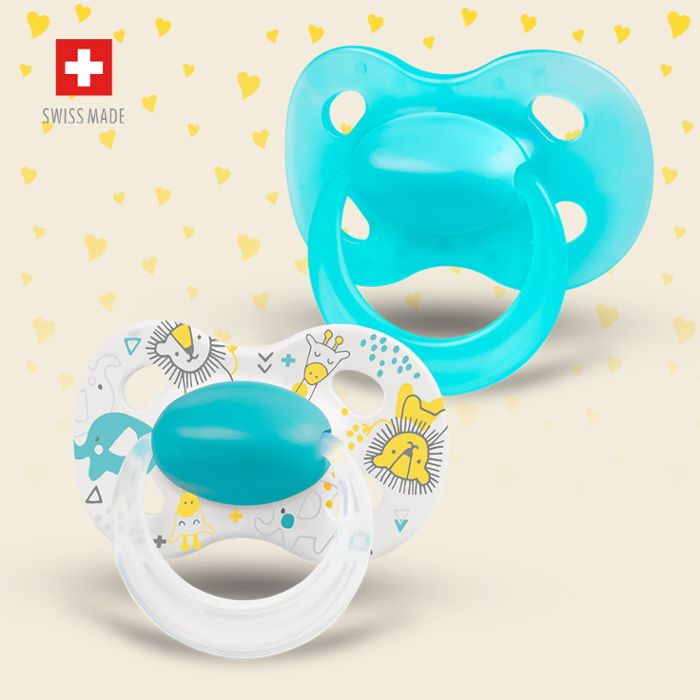

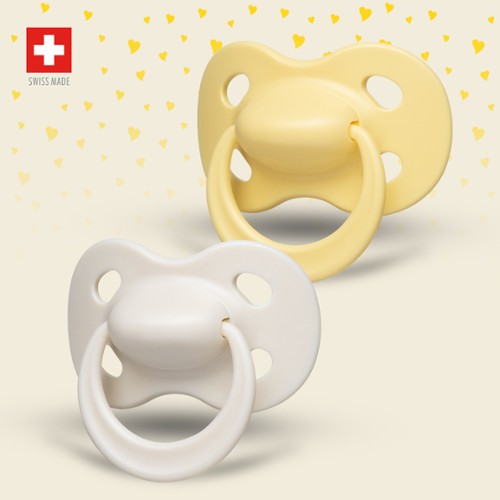
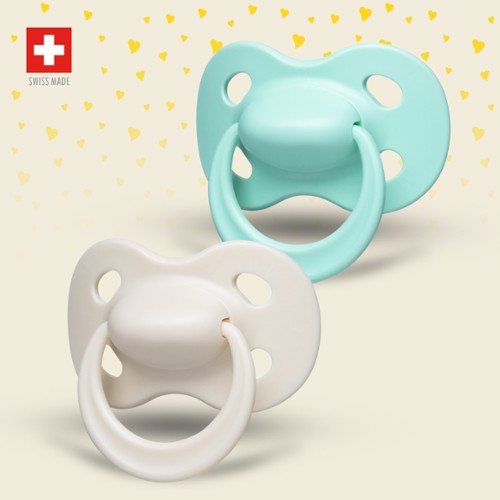
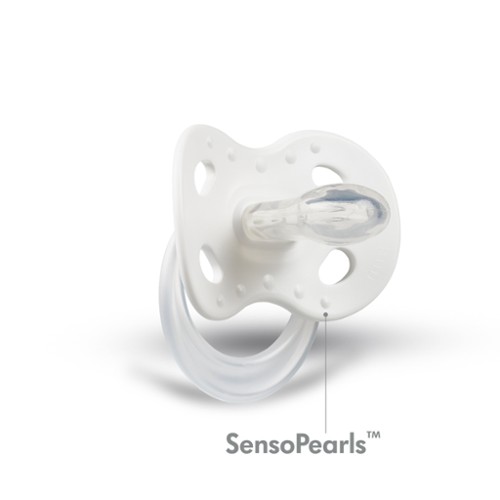
 Buy Now
Buy Now

